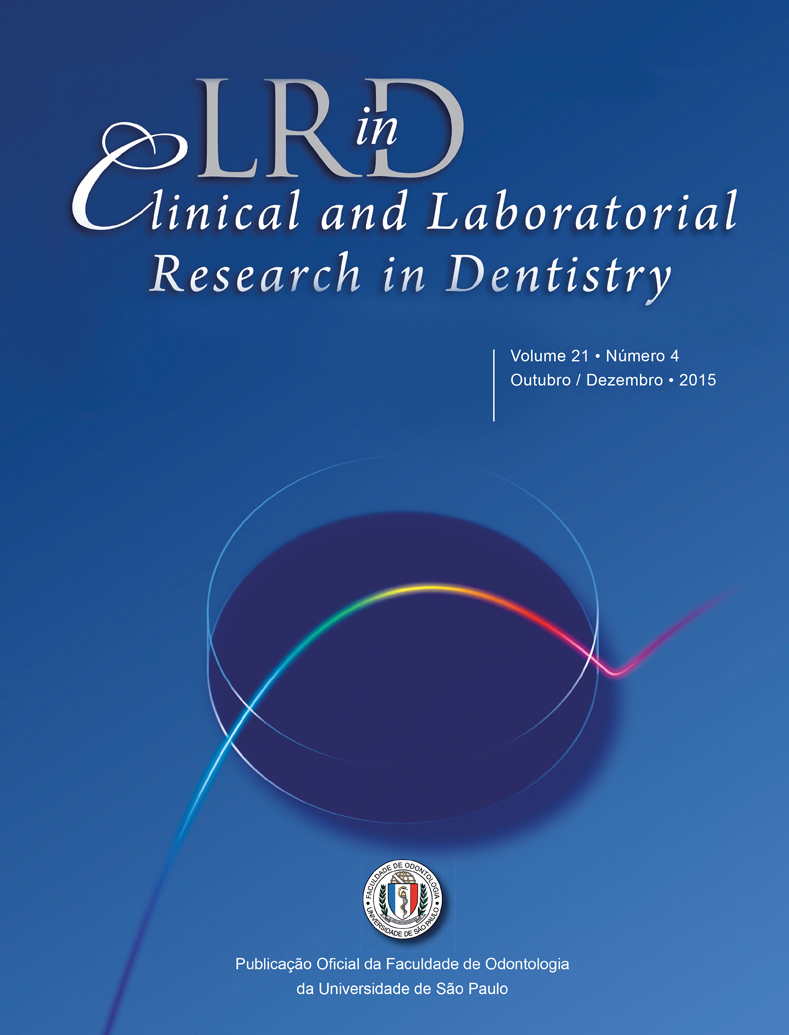Association between disc displacement without reduction and temporomandibular joint derangement observed on magnetic resonance imaging
DOI:
https://doi.org/10.11606/issn.2357-8041.clrd.2015.127551Keywords:
Pterygoid Muscles, Temporomandibular Joint, Temporomandibular Joint Disc, Mandibular Condyle, Magnetic Resonance ImagingAbstract
This study aimed to assess possible associations between the following factors: articular disc anatomy and position; articular eminence and condyle morphology; presence of joint effusion; condyle mobility; and lateral pterygoid muscle insertion pattern. Magnetic resonance images of 33 joints of symptomatic patients were assessed. The articular disc was classified as normal, elongated, or folded; displacement was classified as normal, lateral, or medial; the condyle was classified as rounded, convex, flattened, or angulated; the articular eminence was classified as box, sigmoid, flattened, or deformed; condyle mobility was classified as normal, hypomobile, or hypermobile; and the lateral pterygoid muscle insertion pattern was classified as Type I, Type II, or Type III. The most frequent forms of articular disc, articular eminence, and condyle were folded, flattened, and flattened, respectively. There can be a relationship connecting TMJ mobility with a normal disc form (100%); TMJ hypomobility with a folded disc form (48%); and TMJ hypermobility with an elongated disc form (100%). Magnetic resonance imaging allowed the clear observation of articular structures, and no association was found between insertion pattern and sideways disc position, disc form, and condyle form. All cases with joint effusion were related to hypomobility (100%).
Downloads
Downloads
Published
Issue
Section
License
Authors are requested to send, together with the letter to the Editors, a term of responsibility. Thus, the works submitted for appreciation for publication must be accompanied by a document containing the signature of each of the authors, the model of which is presented as follows:
I/We, _________________________, author(s) of the work entitled_______________, now submitted for the appreciation of Clinical and Laboratorial Research in Dentistry, agree that the authors retain copyright and grant the journal right of first publication with the work simultaneously licensed under a Creative Commons Attribution License that allows others to share the work with an acknowledgement of the work's authorship and initial publication in this journal. Authors are able to enter into separate, additional contractual arrangements for the non-exclusive distribution of the journal's published version of the work (e.g., post it to an institutional repository or publish it in a book), with an acknowledgement of its initial publication in this journal. Authors are permitted and encouraged to post their work online (e.g., in institutional repositories or on their website) prior to and during the submission process, as it can lead to productive exchanges, as well as earlier and greater citation of published work (See The Effect of Open Access).
Date: ____/____/____Signature(s): _______________


